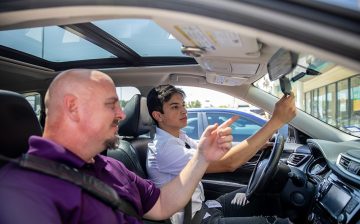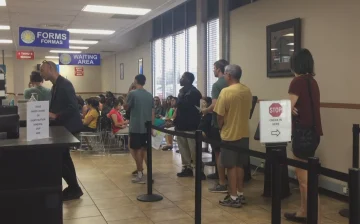Is it Weird for a 19-Year-Old or a Full-Grown Adult to Take Drivers Ed Classes or Courses in Illinois?
Driving is a skill that transcends age, and the idea of adults taking drivers ed classes in Illinois is not as unconventional as it might seem at first glance. In this article, we’ll delve into the nuances of adults enrolling in drivers education, exploring its importance, benefits, and the societal perspectives surrounding this choice.
Importance of Drivers Ed
Adult drivers ed classes is not just for teenagers getting their first taste of independence. It serves as a crucial step for individuals of all ages looking to enhance their driving skills, understand updated traffic laws, and stay informed about evolving road safety measures.
Addressing Social Perceptions
Despite the evident benefits, there might be societal stigmas attached to adults taking drivers ed classes. It’s essential to break down these perceptions and emphasize the positive aspects of ongoing education for drivers.
Benefits for Adults
Adults stand to gain various advantages by enrolling in drivers ed courses. From improved confidence on the road to potential insurance discounts, the benefits extend far beyond the classroom.
Legality and Eligibility
Before diving into a Adult driver education course, it’s crucial for adults to understand the legal aspects and eligibility criteria. Fortunately, Illinois welcomes individuals of all ages to participate in these educational programs.
Flexible Learning Options
Adult learners often juggle multiple responsibilities, making flexibility a key consideration. Luckily, there are various options, including online courses and evening classes, catering to the diverse schedules of adult learners.
Overcoming Challenges
While adults might face unique challenges in the drivers ed classroom, such as balancing work and family commitments, proactive solutions can turn these challenges into opportunities for growth and learning.
Real-life Success Stories
It’s inspiring to learn from those who’ve walked the same path. Real-life success stories of adults who found value in drivers ed can motivate others to embark on this educational journey.
Professional Guidance
Professional guidance is invaluable, especially for adult learners who may have been away from the classroom setting for an extended period. Instructors can provide personalized support and address individual concerns.
Tips for Adult Learners
For adults considering drivers ed, practical tips can smooth the learning curve. From time management strategies to effective study habits, these tips enhance the overall learning experience.
Creating a Supportive Environment
A supportive environment is essential for any learner. Adult drivers ed programs that foster camaraderie and understanding can contribute significantly to a positive learning experience and it provide Adult driver education certificate..
Breaking Stereotypes
Let’s challenge the stereotype that drivers ed is exclusively for the younger generation. Adults have the right to pursue education at any age, and breaking free from stereotypes is a liberating step.
Addressing Common Concerns
Adults may harbor concerns about fitting into a classroom with younger students. Addressing these concerns head-on and highlighting the inclusive nature of drivers ed programs can alleviate anxiety.
Testimonials
Nothing speaks louder than success stories. Here are a few testimonials from adults who discovered the value of drivers ed later in life:
- “I thought I knew everything about driving until I took a refresher course. It made me a more aware and responsible driver.”
- “Enrolling in drivers ed in my 30s was the best decision. It not only boosted my confidence but also saved me money on insurance.”
- “Learning with people of different ages brought diverse perspectives to the table. It was a fantastic experience!”
Conclusion
In conclusion, the decision to take drivers ed as an adult in Illinois is far from weird; it’s a commendable choice for personal and community safety. The roads are for everyone, regardless of age, and ongoing education ensures a harmonious driving experience for all.
FAQs
- Is it common for adults to take drivers ed in Illinois?
- Absolutely. Many adults choose to enroll in drivers ed to enhance their skills and stay updated on road safety.
- Can adults benefit from insurance discounts after completing drivers ed?
- Yes, completing drivers ed can often lead to lower insurance premiums for adults.
- Are there online options for adult drivers ed in Illinois?
- Yes, Illinois offers flexible learning options, including online courses, catering to the needs of adult learners.
- How can adults overcome the challenges of balancing work and drivers ed?
- Planning and time management are key. Many programs offer flexible schedules to accommodate working adults.
- Is there an age limit for adults taking drivers ed in Illinois?
- No, there is no age limit. Adults are welcome to enroll in drivers ed courses at any time.









